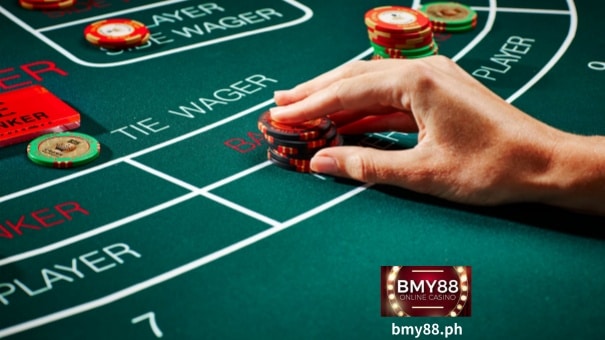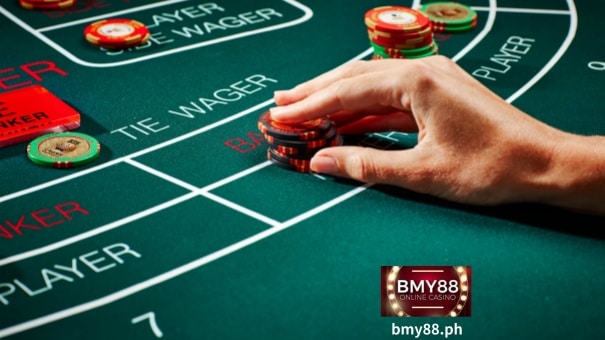The most common version of the game Baccarat
Hot646 Baccarat is one of the most popular games in both land-based and online casinos and is available in several versions. While the goal remains the same, which is to bet on whether the player or banker’s card is closest to a 9, each version has unique rules and additional outside bets that make each version unique. Since you may encounter different Baccarat rules, we will list the following versions and explain them in detail for you:
Dragon Tiger Punto Banco (American Baccarat) Mini Baccarat Three Card Baccarat Super 6 Chemin de fer Baccarat Bank European Baccarat Dragon Tiger
If you are completely new to baccarat, be sure to try Dragon Tiger first. This is a version of Baccarat where there are two cards, one is dealt to the “Dragon” and one to the “Tiger”. It’s up to you to choose which card has the highest value, dragon or tiger, and it doesn’t require a mining process, making it simpler and faster. The odds of winning on a dragon or tiger bet are half of 1:1, with a similar casino bonus of 3.73%. The payout for Lol646 is 8:1 for a par bet, but the similar payout for this bet is as high as 32.77%.
The game uses eight decks of playing cards, with K as the highest card, followed by Q, J, 10, 9, 8, 7, 6, 5, 4, 3, 2, and A. If the points are the same, the suit level is: Heart>Diamond>Three Colors>Stable. Players can bet on dragon, tiger, tie, dragon single, dragon double, tiger single, tiger double, dragon red, dragon black, tiger red, tiger black, up to 11 gambling options.
Players place bets before the cards are dealt. The dragon position is assigned first, followed by the tiger position. The winner is determined based on the position with the higher card value, or a tie if the positions have the same value and suit.
unique features
When betting on the Banker to win, the odds are 1:1 for even numbers, unless the Banker’s hand total is 6, in which case the odds drop to 0.5:1, taking the casino’s odds from the standard 1.06 % increased to 1.46%.
Additionally, there is an additional bet called the Super 6 Side Bet, which can be activated for an additional fee. If the dealer’s hand totals 6 (called a “Super 6”) and you correctly predict that the dealer will win with a hand of 6, you will be paid 12:1.
Railway
Chemin de Fer is one of the most popular versions of Baccarat, and it differs from other versions in that players compete against each other rather than against the dealer. It uses six decade cards, with the player becoming a lender each time they choose. The main goal of the game remains the same, with a minimum of 8 players and a maximum of 12 players.
When the game begins, one player at the table becomes the dealer, usually starting from the first position to the dealer’s right, and is responsible for shuffling and dealing the cards. Successive instances proceed in a counterclockwise fashion. Lenders have the option to remain as lenders as long as they win or place bets, while players have the right to refuse to act as lenders.
Before the cards are dealt, the dealer must place a bet, and other players can place bets with the dealer. The player’s total bet must be less than or equal to the lender’s bet. If a player’s total bet exceeds the lender’s bet, the lender may choose to add bets or remove the excess bets from the table.
Each player can “Banco” – place a full bet on the lender. If there is more than one player “Banco”, the player with creditor rights will be given representation rights, called the “Banco prime”.
The game has thirty cards and can accommodate 10 to 16 players. The lender sits in the middle, dividing the table into left and right parts. The gameplay is very similar to Chemin de Fer, but there are some subtle differences. Typically, the role of lender is awarded to the player with the highest bet or the first player on the list until the cards or funds are exhausted and no more bets can be placed. Although players take turns being the lender, they do not compete, and the player who becomes the lender during a round does not have to pay the other players’ bets.
Players are dealt two hands of cards, one on the left side of the table and one on the right side of the table. The lender receives only one card, which is placed in front of the lender. The lender can only bet on the lender’s hand, while other players can only bet on the player’s hand. If they want to bet on the same player’s hand, they must place their bet in the middle of the table. The player’s hand is compared to the creditor’s hand, and the player’s hand and the debitor’s hand win or lose independently and do not interact with each other in any way.

